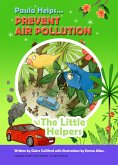Through a unique systems-thinking approach, the book demonstrates how air quality functions as an interconnected network rather than isolated phenomena. The text progresses logically from fundamental concepts of atmospheric science to complex interactions between pollutants and human health. It traces the evolution of air quality monitoring from the industrial revolution to modern sensing technologies, while incorporating real-world case studies from major urban areas.
The book's three main sections cover the science of air composition, major pollutant behavior, and health implications, making technical concepts accessible to both environmental professionals and concerned citizens. What sets this book apart is its interdisciplinary approach, connecting atmospheric science with public health, urban planning, and climate science. Readers gain practical knowledge about interpreting air quality indices, understanding health advisories, and implementing mitigation strategies at both individual and community levels.
By examining air quality as a dynamic system requiring understanding at both molecular and global scales, the book provides essential insights for addressing contemporary environmental challenges.
Dieser Download kann aus rechtlichen Gründen nur mit Rechnungsadresse in A, B, BG, CY, CZ, D, DK, EW, E, FIN, F, GR, H, IRL, I, LT, L, LR, M, NL, PL, P, R, S, SLO, SK ausgeliefert werden.









